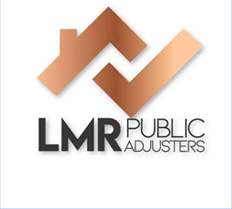What should you do after a tree crashes into your roof? It’s a question no homeowner wants to face, but in storm-prone areas like South Florida, it’s a real possibility. From structural damage to insurance headaches, the aftermath can be overwhelming. At LMR Public Adjusters, we help property owners like you take control of the situation and get the compensation you deserve.
First, ensure everyone’s safety and contact emergency services if needed. Then, document the damage thoroughly and notify your insurance company. In this article, we’ll walk you through the essential steps—from securing your property to filing a successful claim. With expert guidance, you can turn a stressful event into a manageable process.
But that’s just the beginning. We’ll also share insights from industry experts like Steve Severaid, a nationally recognized public adjuster, on how to avoid common claim mistakes. Want to know how to maximize your insurance payout and avoid delays? Let’s dive into the must-know steps after a tree damages your roof.
Assess the Immediate Danger
Your safety comes first. If the tree has compromised your roof’s structure, evacuate immediately. Do not risk staying inside. Once outside, maintain a safe distance from the damaged area. Look for fallen power lines, broken gas pipes, or sparks. These are serious hazards that require urgent attention.
Avoid touching or moving anything. Instead, scan the surroundings carefully. If you detect a gas smell or see exposed wires, call emergency services right away. Contact the fire department or utility companies before attempting any cleanup. Acting too soon can lead to injury or worsen the damage.
Stay informed by reviewing our FAQ section for common concerns after storm damage. If your home is affected, visit our home-damaged page for next steps. These resources offer valuable guidance during emergencies.
Remain calm and wait for professionals to declare the area safe. Only then should you begin documenting the damage or contacting your insurance provider. Prioritize safety above all else.
Document the Damage Thoroughly
Start by capturing clear photos and videos of the damage from every angle. Include wide shots and close-ups of both the interior and exterior. Focus on broken shingles, exposed beams, and any debris inside your home. Avoid moving anything until you’ve fully documented the scene. This ensures your insurance claim remains valid and accurate.
Use natural lighting if possible to enhance image clarity. Record a video walkthrough to provide a complete visual context. While documenting, note the exact date and time of the incident. Also, write down the weather conditions, such as wind speed or rainfall, at the time of the damage.
Keep all this information organized in a digital folder. It will streamline your communication with your insurance company. For more guidance on handling claims, visit our property claims page. If your home is damaged, acting quickly and thoroughly can make a significant difference. Proper documentation is your first step toward a successful recovery.
Contact Your Insurance Company
Start by locating your homeowner’s insurance policy. Review it carefully to confirm coverage for tree-related roof damage. Look for sections detailing storm damage, falling objects, or natural disasters. If you’re unsure, contact your agent for clarification.
Next, gather essential documentation. Take clear photos of the damage from multiple angles. Note the date and time of the incident. Write a brief summary of what happened. Keep your policy number handy.
Now, file your claim. Call your insurance provider or use their online portal. Provide all requested details, including photos and your written summary. Be honest and concise.
An insurance adjuster will likely visit your property. Prepare by securing the area and having all documents ready. Walk them through the damage and answer questions clearly. Stay present during the inspection.
Remain proactive throughout the process. Follow up regularly and document all communication. For more guidance, explore our property claims page or learn about our team of experienced adjusters.
Understanding your rights and responsibilities can help you avoid delays and maximize your claim.
Prevent Further Damage
Act quickly to stop further damage. Start by covering exposed areas with a heavy-duty tarp. Secure it tightly using nails or roofing tape to prevent water intrusion. If windows are shattered, board them up with plywood to keep out rain and debris. Always wear gloves, boots, and a hard hat when working near damaged structures.
Avoid climbing on the roof if it’s unstable. Instead, assess damage from the ground using binoculars. If you’re unsure how to proceed, contact a licensed contractor or a Fort Lauderdale public adjuster for guidance. They can help you understand the extent of the damage and recommend safe next steps.
Keep children and pets away from the affected area. Use caution tape or barriers to mark off dangerous zones. For severe damage, it’s best to leave repairs to professionals. They have the tools and experience to handle complex situations safely.
For more help on handling property issues, visit our property claims page. Taking swift action now can save you from costly repairs later.
Hire a Certified Arborist and Roofing Contractor
Bringing in certified professionals ensures accurate assessment and safe handling of both tree and roof damage. A licensed arborist evaluates the tree’s stability and determines whether removal is necessary. Meanwhile, a qualified roofing contractor inspects structural issues and begins essential repairs. Their combined expertise prevents further complications and costly mistakes.
To find reputable experts, start by verifying licenses and insurance. This protects you from liability and ensures professional standards. Read online reviews to gauge reliability and customer satisfaction. Ask for references and check their experience with storm-related damage.
The arborist focuses on tree health, potential hazards, and safe removal. The roofer handles everything from leak detection to full roof restoration. Both roles are crucial for a complete recovery process. Avoid hiring unverified workers, as they may cause more harm than good.
For additional guidance, explore our FAQ section or learn more about handling property claims. Acting quickly with the right team minimizes risks and restores your home efficiently.
Understand the Repair Process
Once a tree damages your roof, the repair process begins with a thorough inspection. A licensed contractor assesses the structural impact and identifies necessary repairs. Next, they remove debris and secure the area to prevent further damage. Depending on severity, you may need a full roof replacement or partial repair.
Timelines vary. Minor repairs can take one to three days, while full replacements may require up to two weeks. Materials used often include asphalt shingles, metal panels, or tile, depending on your existing roof. Costs fluctuate based on damage extent, material choice, and labor. On average, homeowners spend between $5,000 and $15,000.
Before work begins, check if your city requires permits. Most municipalities mandate inspections during and after repairs to ensure code compliance. Failing to obtain permits can delay the process and increase costs.
For guidance on navigating insurance claims, visit our property claims page. If your home is damaged, our experts can help you recover faster. Always work with licensed professionals to ensure quality and safety throughout the repair process.
Address Interior Damage and Water Intrusion
Begin by inspecting ceilings, walls, and attic spaces for signs of water stains or bubbling paint. Check for soft spots or discoloration, especially near the impact zone. Use a flashlight to examine dark corners and insulation in the attic. If you detect a musty odor, mold may already be forming.
Next, dry out affected areas immediately. Open windows to increase airflow and use fans or dehumidifiers to reduce moisture. Remove wet materials like rugs, curtains, or furniture to prevent further damage. Clean all surfaces with a disinfectant to stop mold spores from spreading.
If water has soaked into drywall or insulation, call a professional. A certified water damage restoration specialist can assess hidden damage and prevent long-term issues. Delaying this step may lead to costly repairs and health risks.
For extensive damage, especially in older homes or commercial buildings, consult experts experienced in property claims. They can help you document losses and navigate insurance processes. Don’t wait—quick action protects your home and your peace of mind.
Know Your Legal Rights and Responsibilities
If a tree damages your roof, determining liability depends on ownership and negligence. If the tree was healthy and on your property, you’re typically responsible. However, if a neighbor’s neglected tree falls and causes damage, they may be liable. Responsibility often hinges on whether the tree showed visible signs of decay or posed a known risk.
Local ordinances can influence liability. For instance, some municipalities require property owners to maintain trees near boundary lines. If ignored, and damage occurs, the owner could be held accountable. Always check your city’s codes or HOA rules for specific guidelines.
Disputes can escalate quickly. If you and your neighbor disagree on fault, consult a legal expert to protect your rights. Legal advice becomes crucial when insurance companies deny claims or shift blame.
To better understand your options, explore our property claims process. You can also learn more about our team on the about us page. Acting quickly and knowing your responsibilities can help you avoid costly legal battles.
Take Preventative Measures for the Future
Regular tree maintenance is essential to avoid future roof damage. Start by pruning overhanging branches at least twice a year. Hire a certified arborist to assess tree health and remove any weak or diseased limbs. This reduces the risk of falling debris during storms.
Schedule annual roof inspections to catch minor issues before they escalate. A professional can identify loose shingles, clogged gutters, or structural weaknesses. Timely maintenance helps extend your roof’s lifespan and minimizes costly repairs.
Storm-proofing your property adds another layer of protection. Reinforce windows, secure outdoor furniture, and install gutter guards. Consider upgrading to impact-resistant roofing materials for added durability.
Evaluate your yard layout as well. Avoid planting large trees too close to your home. Their roots can destabilize the foundation, and their branches pose a hazard during high winds.
For more guidance on protecting your property, visit our property claims page. You can also explore our blog page for expert tips and updates. Taking these steps now can save you from major headaches later.
Frequently Asked Questions (FAQs)
If a tree crashes onto your roof, act fast. First, ensure everyone is safe and evacuate if needed. Call emergency services if there’s a risk of fire or structural collapse. Next, contact your insurance provider to report the damage. Take clear photos for documentation. Avoid climbing the roof yourself—wait for professionals.
Homeowner’s insurance usually covers tree damage, especially if caused by storms. However, neglect or dead trees may void coverage. Review your policy details or check our FAQ for more insights.
Roof repairs typically take 1 to 3 weeks. Timelines depend on damage severity, weather, and contractor availability. If your neighbor’s tree caused the damage, liability depends on negligence. If the tree was healthy, your insurance may still cover it.
Staying home during repairs depends on the damage extent. For major issues, consider temporary housing. Costs vary widely—tree removal and roof repair can range from $3,000 to $15,000. Factors include tree size, roof type, and labor.
Watch for hidden damage like water stains, cracked walls, or sagging ceilings. Choose a licensed, insured contractor with strong reviews. If the tree remains on your roof, call professionals immediately. Prevent future incidents with regular tree trimming and roof inspections.




